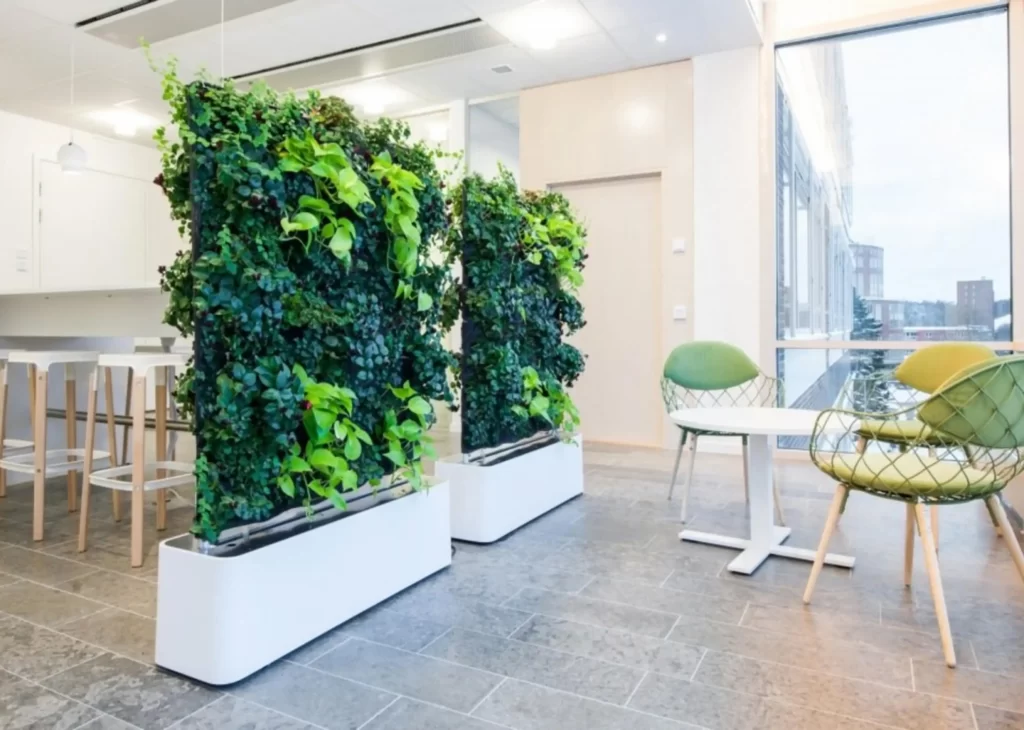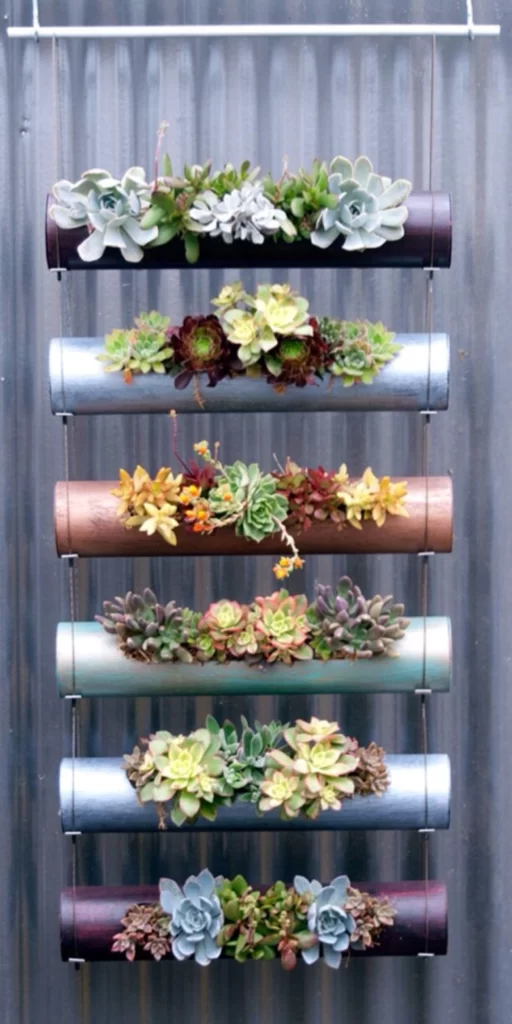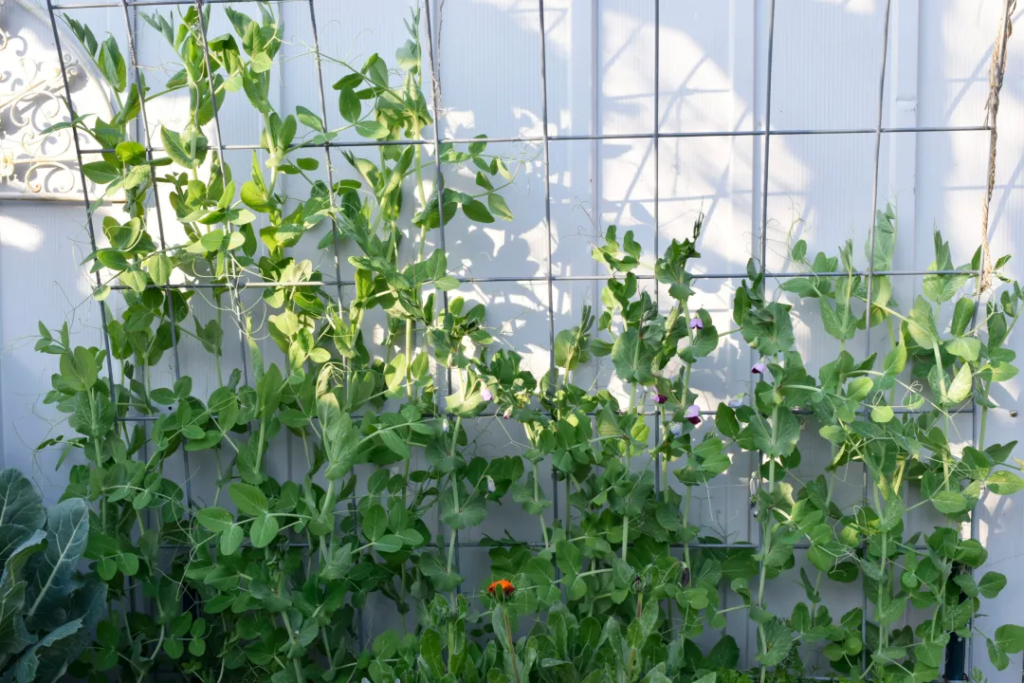Vertical landscaping is a remarkable trend that has developed in large cities where green space is occasionally limited. Offering a harmonic fusion of beauty and sustainability, this original and imaginative approach to gardening has caught the eyes of architects, cultivators, and nature enthusiasts alike.
Know how to redesign your space using innovative vertical gardens, plants, and green walls. Upscale aesthetics, reduce plant space occupation,n and embrace energy-efficient gardening methods for greener surroundings. Get inspiration and start your vertical gardening mission today!
What is vertical landscaping?
Vertical landscaping is a remarkable trend that has developed in large cities where green spacei is occasionally limited. As it offers a harmonic fusion of beauty and sustainability, this original and imaginative approach to gardening has caught the eyes of architects, cultivators, and nature enthusiasts alike.
15 Innovative Vertical Landscaping Ideas
Live Art Frames
Hang a variety of plant categories, such as succulents, mosses, or air plants, vertically from frames and ceilings to create stunning live artwork.

Modified vertical pallets
Old pallets may be transformed into vertical planters to increase the space area while giving it an old-fashioned charm.

Garden on gutter
Old gutters can be mounted horizontally on a wall or fence to create Gutter Gardens, a creative way to cultivate herbs and plants with shallow roots.

Hanging miniature gardens
use the ceiling or surrounding walls to hang various plants and create a beautiful planter display.

Tower Garden
You can arrange various flowers, herbs, and vegetables in stacked pots or towers to create an attractive vertical greenery display.

Woolly pockets
Installing pliable, permeable felt spaces on a wall will enable you to develop a variety of plants using the original method.

Living Room Dividers
Tall plantings or upright garden screens are used to divide rooms inside while bringing plants into the decor.

Shoe organizers
Shoe organizers with transparent pockets can be used as plant and soil containers, making them perfect for compact areas.

Green Facades
To make your building’s exterior lush, use climbing plants like vines or roses to create a lush fence or facade.

Hydroponics
Implement a system based on hydroponics, where vegetation grows in water rich in nutrients, eliminating the requirement for soil.

Outdoor vertical herb garden
grow various herbs or vegetation in stack pots near your kitchen, or use the kitchen window frame to stack up planters and quickly access them.

Multiple hanging shelves
Build multi-tiered shelves that hang from the ceiling to display a variety of greens, thus decorating the space.

Recycled Containers
Use your creativity to build an environmentally friendly vertical garden from recycled jars, bottles, or plastic containers.

Vertical pipelines
Using vertical PVC lines or rainfall gutters, you can produce strawberries or small shrubs in a limited area.

Moss wall
create an eye-catching living moss wall installation indoors or outdoors. Moss wall is also easy to maintain comparatively and adds to the room’s beauty.

Is vertical landscaping beneficial or troublesome?
Although vertical gardening has numerous benefits, it presents a particular set of difficulties.
Vertical landscaping advantages
Space-savers
Vertical landscaping allows one to enjoy the aesthetics of a garden despite having a small space. Vertical plantings are perfect for small areas and rooms, and they help us incorporate green beings into our living spaces.

Better air quality
Plants improve the quality of life and the environment by removing contaminants from the air and releasing oxygen. This improves the air around them, leading to a healthier, relaxed, and peaceful lifestyle. Plants also add to the beauty of the space.

Temperature control
Vertical landscaping can act as insulation, lowering the temperature within the area. Thus, it cools our living spaces and provides a more comfortable shaded space, improving the quality of life.

Noise reduction and windbreaker
In busy places, vegetation serves as a barrier, absorbing noise and reducing outside sound. It also acts as a physical barrier, breaking the wind speed and reducing its force and impact.

Aesthetic addition
Green walls and vertical planters enhance the beauty of the space, making it visually attractive and soothing to the eyes. They lift the mood and trigger a sense of comfort and relaxation.

Privacy fences
Implementing the methods of vertical landscaping could construct excellent privacy fences. For example, a fence could be installed and climbing vines let climb all over it, creating a live plant wall. Plant boxes could also be installed all over the fence with various species of plants.

Vegetable cultivation
Use vertical gardening to grow vegetables of your choice in your living space, and use hanging baskets and window boxes to plant vegetables.

Beautification of trees
Use the tree trunk to attach complementary, vertical plants using baskets, bottles and boxes to enhance the beauty of your trees.

The challenges while practicing vertical landscaping
Maintenance
after the setup of vertical gardens in your space, constant monitoring and maintenance are required so that they flourish well and stay healthy; it could be a Hassel as they require regular watering, pruning and clean up, which could be very time-consuming.
Watering challenge
It’s challenging to ensure that all plants on a vertical scale are adequately watered. Also, there are probable difficulties with setting up proper drainage systems, in the absence of which wall maintenance might be at risk.
Requirement of additional structures
It’s essential to create a proper framework over the wall or vertical space to uphold the planters and to prevent damage to the structures. The weight of the plant and the added moisture require adequate support.
Variety of plants
Adding a variety of planters that can survive and flourish in the vertical space becomes crucial to enhancing the aesthetics and providing excellent carbon sequestration.
Cost of initial setup
Depending on the size of the area, the initial cost of creating vertical structures, the setup of various plants, and their maintenance could cost a handful.
DIY Vertical Garden
- Choose the right location: Look for a suitable location with ample sunlight and sufficient structures for vertical gardening.
- Do the planning: Based on the available space and framework, plan how you would want your vertical garden’s layout, structure, and design to look. Consider using boxes, shelves, pallets, hanging pots, etc.
- Choose suitable plants: pick plants that would fit in the vertical space and survive in the local environment.
- Prepare the structures and soil: Construct the structures supporting your plants. If you are installing shelves, make sure they can uphold the weight of your plants on the walls or fences. Then, prepare the soil that doesn’t retain water for long so that it’s well drained to avoid water logging.
- Planting: Carefully place your chosen plants in the containers, allowing them to develop and flourish. Place taller plants in the backside and trailing shrubs in the front, taking into account their growth habits.
Plants you can grow in your vertical garden
Many varieties of plants and herbs would fit perfectly in your vertical space. A few of them are:
Climbing roses
These lovely flowers give any vertical garden a touch of elegance.

Clematis
Clematis are great climbers that survive well in Canada’s cooler climates and are widely known for their pretty flowers.

Peas
You can plant edible peas as a great addition to your garden. Also, they are perfect for vertical gardening.

Tomatoes
During the growing season, various tomatoes appropriate for vertical gardens could be used to produce a good harvest.

Beans
As they climb and produce delicious pods, beans make excellent choices for vertical planting.

Nasturtiums
These vibrant, edible blooms are simple to grow and add a variety of colours to your vertical garden.

Most common plants for a vertical garden
- Vining plants are native climbers that grow vertically and may cling to buildings. Ivy, pothos, philodendrons, and hanging roses are common vining plants.
- Plants with a trailing growth habit, such as trailing plants, are ideal for wall-mounted planters or hanging baskets. Examples include bacopa, nasturtiums, and trailing petunias.
- Herbs: Due to their small size and culinary utility, plants like basil, mint, oregano, and thyme are frequently chosen for vertical gardens.
- Succulents: Available in various sizes and shapes, succulents are low-maintenance plants that work well for vertical gardening. Commonly utilized species include Echeveria, Sedum, and Senecio.
- Ferns: Ferns work particularly well for vertical gardens in shaded or indoor areas. Popular options include Maidenhair ferns and Boston ferns.
Tips for your vertical garden
Sunlight: When choosing plants for your vertical garden, consider how much sunlight the area will receive. While some plants prefer partial or complete shade, others do best in full sun.
Watering: Make sure your plants are being watered properly. Most vertical gardens could quickly dry up, so check the moisture levels frequently and adapt your watering schedule as necessary.
Choose species with similar water and sunlight requirements to make upkeep easier and assure the general well-being of your plants.
Drainage: Adequate drainage is necessary to avoid root rot and waterlogging. Ensure you choose soil that drains adequately; the planters or containers can let excess water out.
Maintainance: Watch for pests, illnesses, and indications of nutrient inadequacies. Prune or trim your plants as necessary to promote healthy development and maintain their shape.
Examinations: Examine your plants often for common pests and illnesses that could harm them. Early detection and the proper preventative measures can avoid significant concerns.
✅ Conclusion
In conclusion, verticals provide a sustainable solution to gardening creatively in limited spaces. Various structures can transform the space into a beautiful vertical cluster of greens. These gardens add to the visual appeal, improve the surrounding air, and carry many practical benefits.
Although vertical gardening is very popular, it comes with its share of challenges as well. First, its initial installation cost is higher compared to a small normal garden; one has to take care of proper maintenance and drainage of the plants; proper support and framework must be provided for the plants so that they don’t burden the walls or surrounding structures.
Using vertical gardening techniques, one can create a beautiful space through careful planning and proper plant selection. Implementing the idea of vertical gardening not only promotes eco-friendly practices but also builds a deeper connection with nature.
FAQs
How much does a vertical garden cost in Canada?
The cost of a vertical garden depends upon the size of the area and the plants you chose; however, a small to medium size vertical garden could cost anywhere between $100 to $500.
Is it the same as small-space gardening?
No, they are related, but not the same; vertical gardening involves just the use of vertical space to grow plants, whereas small space gardening is a broader term which includes vertical gardening and is aimed to make the most of the small compact areas such as balcony, small yard etc.
Where should you practice vertical gardening?
One can use any space, but it’s practiced chiefly over walls, fences, drainage pipes etc. because vertical gardens need support.
Why should you practice vertical gardening?
One should practice vertical gardening in small spaces to enhance the beauty and add to the aesthetics and culinary utility.






